Interactive map! Click here for larger version.
We've reached the last of four CicLAvias to end the 2022 season, the 42nd open streets event since its inception in October 2010. According to author Douglas Adams, the answer to live, the universe and everything is "42." Is it no coincidence that this 7.3-mile route from Exposition Park to Watts crosses 42nd Street?
This Sunday's route may or may not be a new route, although it incorporates parts of four previous CicLAvia alignments. Parts of Central Avenue and Martin Luther King Jr. Boulevard were first explored in the December, 2014 CicLAvia, and the last quarter of this route into Watts was part of the four-legged Southeast Cities route from May, 2016. The Central Avenue/Watts section was part of the February, 2020 South L.A. route, and Martin Luther King Jr. Boulevard was part of the December, 2021 route a year ago.
Who knows what's in store for 2023?
It may or may not rain on CicLAvia today - and it has before - but somehow, some way, the sun always shines on CicLAvia. You know the drill - See you or not see you on the streets this Sunday!

1. George Lucas Museum of Narrative Art
2023
Vermont and 39th St, Exposition Park
Taking shape on west side of Exposition Park like a Naboo Royal Starship is the George Lucas Museum of Narrative Art (or, "The Luke," as The Militant would like to call it), a state-of-the-art visual, cinematic and interactive museum founded by 'Star Wars' creator and filmmaker George Lucas and his wife Mellody Hobson. The site, located in close proximity to Lucas' alma mater, USC, beat out other site proposals in San Francisco (home of Lucasfilm, Ltd) and Chicago (Lucas' birthplace) when it was announced in 2017. Originally intended to open in 2021, it was delayed to 2023 due to the COVID-19 pandemic.

Bill Robertson Drive & Park Lane, Exposition Park
The Coliseum's little brother, the Los Angeles Swimming Stadium was the 10,000-seat venue for the 1932 Olympic swimming, diving and water polo competitions, as well as the aquatic portions of the pentathlon event. Olympians such as Buster Crabbe swam in its waters. After the games, it became a public pool, and in the '50s, USC's swim team used it as their training and competing venue. After over a half century of wear, and damage from the 1994 Northridge Earthquake, the swim stadium was renovated in 2002 and operates today as the LA84 Foundation/John C. Argue Swim Stadium. Marco...Polo!

Bill Robertson Lane and Martin Luther King Jr Blvd, Exposition Park
Did you know there's an urban garden along the CicLAvia route? Local nonprofit Community Services Unlimited (an organization that, interestingly enough, originated from the Black Panther Party's community outreach programs in the 1970s) grows their own organic fruits and vegetables in this Exposition Park urban garden that they sell and distribute in this predominantly food desert area to help local residents gain access to fresh, healthy produce. They sell this produce at a stand outside the LA84/John C. Argue Swim Stadium next door on Thursday afternoons from 3 to 6 p.m.

4. Historic Southern Pacific Palm Tree
Re-planted 1914
3901 S. Figueroa St, Exposition Park
Back in the late 1800s-early 1900s, the Southern Pacific Railroad operate out of a train station called the Arcade Station, on 5th and Alameda streets. A lone palm tree stood outside the station and functioned as a landmark for arriving passengers coming in from San Francisco or points east. In 1914 (dude, over a hundred years ago) the Arcade Station was demolished (no, it wasn't consumed by a fire) to make way for a more modern station, called Central Station, and the palm tree had to go. So sentimental was the palm tree, instead of being cut down, it was moved to Exposition Park, where it has stood ever since. Like its neighbor the Space Shuttle Endeavour, it was a popular icon back in its day, and it's probably safe to assume that its transport through town was an event in itself. A little-known historic market at the base of the tree tells the whole story. So if you want to see a palm tree that was planted there over 100 years ago, there you go.
5. Banc of California Stadium
2018
3939 S. Figueroa St, Exposition Park
Home of the 2022 MLS Cup Champion Los Angeles Football Club soccer team, this $350 million, 22,000-seat venue is the first open-air stadium to be built in the City of Los Angeles since Dodger Stadium opened in 1962. It was built on the former site of the 16,000-seat Los Angeles Memorial Sports Arena (1959-2016), which was the first Los Angeles home of the Lakers (1960-1967), the Clippers (1984-1999) and hosted the Boxing matches during the 1984 Olympics. Banc Stadium is also the home venue of the Angel City FC National Women's Soccer League team and will host the Men's and Women's Soccer tournaments during the 2028 Olympics.
1925 (demolished 1969)
Avalon Blvd & 42nd Place
Just a few blocks south of the CicLAvia route is Gilbert W. Lindsay Park, named after Los Angeles' first African American city councilman. But years ago, this was the place where home runs, strikeouts and 7th Inning Stretches took place in the City of Angels. And yes it was a city of Angels, as the Los Angeles Angels of the Pacific Coast League made the 22.000-capacity Wrigley Field (named after the chewing gum magnate, who had several stakes in Southern California, including Catalina Island) its home. And as any truly militant Angeleno knows, the ivy-and-brick Chi-town tourist trap, though 11 years older, was originally called Weeghman Park and wasn't dubbed Wrigley Field until 1927, which made Los Angeles' Wrigley Field the first Wrigley Field ever. The stadium also was popular with TV and movie shoots, such as Damn Yankees and The Twilight Zone. In 1961, it literally went Major League as the American League expansion team Los Angeles Angels of Los Angeles played its home games there before moving to Dodger Sta, er, Chavez Ravine for the next four seasons, and then finally moving down the 5 to Anaheim. Wrigley Field was also home of the Los Angeles White Sox, a club in the short-lived, 6-team West Coast Negro Baseball Association, a Black minor league co-founded by Olympic gold medalist Jesse Owens which lasted but a single season in 1946. Yes, there's a baseball field in the park, but it's not the same location as the original diamond.

1929
4016 S. Central Ave, South Los Angeles
This mainstay of the local Muslim community since 1973 also has a deep history in the local black community. The original building was originally built in 1929 as the home of the local Elks club. But it was no ordinary Elks Club (who discriminated against black membership). It was run by the Improved and Benevolent Protective Order of Elks of the World, an African American-run organization founded in Cincinnati, Ohio in 1898 that functioned as a fraternal order for people of color. Though obviously not directly affiliated with the white Elks club, it is run with the otherwise identical customs and traditions, and with nearly half a million members worldwide, is the largest black fraternal organization in the world. A new mosque building, fronting Central Avenue, has been under construction since 2019, which features the tallest minaret in California.

1919
1221 E. 40th Place, South Los Angeles
The Central Avenue corridor was home to Los Angeles' black community, primarily due to the racial covenants that restricted them from owning homes elsewhere in the city. But great things can come from places of injustice. Ralph J. Bunche was a teenager arriving with his family from Detroit, by way of Ohio and New Mexico, who attended nearby Jefferson High School and went to UCLA, graduating as the valedictorian at both schools. He went on to Harvard, where he earned his Ph.D in Political Science (the first African American to receive a doctorate in PoliSci from a U.S. university), and later was one of the founders of the United Nations. In 1950, due to his diplomatic work in the negotiations that ended the 1948 Arab-Israeli War, he won the Nobel Peace Prize -- the first nonwhite person to ever win the esteemed award. And he once lived right here, just two blocks east of the CicLAvia route.
9. Site of Black Panther Headquarters
1969
41st Street and Central Avenue, South Central Los Angeles
Nooo, this isn't where Wakanda is. The northwest corner of 41st Street and Central Avenue wasn't just the Los Angeles headquarters of the 1960s-era Black Panther Party (that's some real Militants right there), but in a time where the names Mike Brown and Eric Garner have been fresh on the minds of people, it was the site of a significant event in the tumultuous history of relations between the black community and the Los Angeles Police Department. On December 8, 1969 -- 45 years before the day after CicLAvia -- police officers arrested a number of people on that corner for loitering, which eventually escalated into a four-hour armed confrontation. The LAPD used a previously untested paramilitary unit during the raid, which was called the Special Weapons And Tactics unit, or SWAT. Four LAPD officers and four Black Panther members were seriously injured during the shootout, but miraculously no one died. The building that housed the headquarters was demolished in 1970.
1928
4225 S. Central Avenue, South Central Los Angeles
Built in 1928 (then known as the Hotel Somerville, the only hotel in Los Angeles at the time to welcome black people) as the primary accommodations venue for the 1928 NAACP national convention at the nearby Second Baptist Church, The Dunbar is one of the few remaining physical symbols of the Central Avenue of yesteryear, the hotspot of all that is jazz and blues. In the perspective of Los Angeles music history, Central Avenue in the 1920s-1950s was the Sunset Strip of the 1960s-1980s. And perhaps even more. A nightclub opened at the hotel just a few years after its opening, and legends such as Count Basie, Cab Calloway, Lena Horne and Billie Holliday. Next door was the Club Alabam, another one of the most popular jazz venues on Central Avenue. Known for its classy image and celebrity clientele (both black and white), legends such as Duke Ellington, Charlie Parker and Miles Davis graced the stage. Today, the Dunbar Hotel building serves as an affordable housing complex for seniors.
2012/1906
5413 S. Avalon Boulevard, South Central Los Angeles
Head west on 54th Street for just a few blocks to Avalon Boulevard to visit this relatively new park space, which opened in 2012 and was covered by The Militant on his blog right after its grand opening. Previously the site of the sprawling South Park Shops, it was a major facility for storing, maintaining and repairing transit vehicles, used from 1906 to 2008 by the Los Angeles Railway, the original Los Angeles Metropolitan Transit Authority, the Southern California Rapid Transit District and today's Metro. After the transit facility was retired, the brownfields were re-purposed as a nine-acre public open space that features native plant landscaping (yessss!), a lagoon that functions not only as a bird habitat, but as a natural stormwater cleaning facility. In addition, a LACMA satellite museum space will be opening at the park soon.
12. Los Angeles Railway U Line
1920-1947
Central and Slauson avenues to Vermont Avenue and Manchester Blvd via Downtown Los Angeles
Central Avenue hosted not one, but two Los Angeles Railway Yellow Car lines in different locations along the CicLAvia route. One of them was the U Line, which originated west of here, at two different branches on Vermont and Manchester and another at Western and 39th. They met near Exposition Park and ran through the USC campus (one of the reasons for the "U" in the line name) and northward onto Downtown Los Angeles before heading back south on Central Avenue and ending at Slauson. The line ran until 1947.
13. Augustus F. Hawkins Natural Park
2000
5790 Compton Ave, South Los Angeles
A few blocks east of the CicLAvia route along Slauson lies another one of the best-kept secrets in South Los Angeles -- Augustus F. Hawkins Natural Park, an 8.5-acre surreal green oasis in the 'hood, featuring ponds, native plants, hiking trails, picnic areas and even wildlife. This former DWP pipe yard was converted into a re-created natural park (named after the late African American congressman who represented the area for 28 years) in 2000 by the Santa Monica Mountains Conservancy, which trucked in actual dirt from Malibu mudslides to the site to form the park's terrain. The park is popular with local residents seeking refuge from urban life, and the park is also popular with members of the local Audubon Society, who frequent the park to do bird sightings and bird counts.
14. Los Angeles Central Post Office/Site of Goodyear Tire Factory
1984/1920-1979
7001 S. Central Ave, Florence-Firestone
In 2008, The Militant visited this ginormous USPS facility, with the numerical designation as the very place where the western ZIP codes begin. Most of Los Angeles' mail gets processed through here, which means letters or packages mailed through here will get sent out of town faster (since they have to come through here anyway). The post office facility opened relatively recently, in 1984, as part of a redevelopment project for the massive parcel, whose previous life was that of the Goodyear Tire & Rubber Co. California factory, which existed from 1920 to 1979.
Automobile tires and other rubber products were manufactured here for nearly 60 years, and early versions of the iconic Goodyear blimp once had its own hangar at the southwestern corner of the lot. But wait -- there's even more history on this lot: nearly two decades before the tire plant opened, this was the home of Ascot Park racetrack, which opened in 1903. The ornate design of the early 20th-century hippodrome inspired the aesthetics of another So Cal racetrack - Santa Anita Racetrack in Arcadia, which opened four years later and still exists today as a place where racehorses meet their untimely death.
15. Los Angeles Railway S Line
1920-1963
Santa Monica Blvd & Western Avenue to Central Avenue & Firestone Blvd via Downtown Los Angeles
Central Avenue's other Yellow Car line was the "S" line, which ran in many different configurations through the years, but most of its life it ran from Santa Monica & Western in East Hollywood through Downtown (like nearly all Los Angeles Railway lines did) and down to Central and Firestone. The picture to the left depicts a Yellow Car in 1963 (then painted green in the old Los Angeles Metropolitan Transit Authority's colors) running by the old Goodyear Tire factory! The line was discontinued (along with many of the other surviving Yellow Car lines) on March 31, 1963 - the final day of rail transit in Los Angeles until the Metro Blue Line (now the Metro A Line) opened on July 14, 1990. BONUS: The Metro-owned parking lot with the single-story ivy-covered concrete building on the southeast corner of Central and 85th Street was once the Los Angeles Railway S Line's terminal loop!
16. Green Meadows Diagonal
1926
Central Avenue between 92nd and 95th streets, Green Meadows
As you ride on the CicLAvia route along Central Avenue, the road makes a seemingly arbitrary diagonal jog between 92nd and 95th streets. Why is that? Well, if you know your Los Angeles history, many non-grid street alignments follow the boundaries of ranchos, properties/land parcels, and legacy cities/towns that were lost to annexation. The latter was the case here, as an unincorporated farm town called Green Meadows sprung up here circa 1887. True to its name, it was a rural settlement with artesian wells, alfalfa fields and apple orchards. The northeast corner of the town featured the diagonal notch, and when the town was finally annexed into the City of Los Angeles on March 18. 1926, the boundary was incorporated into the city street grid and Central Avenue was forced to follow suit. The name Green Meadows was re-claimed in the early 2000s and given to the portion of South Los Angeles where the old town once existed. So now you know!
17. Ted Watkins Memorial Park
Dedicated 1995
1335 E. 103rd Street, Watts
Originally built in the 1930s to memorialize Western actor Will Rogers, this 28-acre Los Angeles County park was re-named in 1995 after the late Ted Watkins, a local community activist and the founder of the Watts Labor Community Action Committee, which he started in 1965, just months before the Watts Riots. The aftermath of the rebellion heightened the purpose of his nonprofit agency, which dealt with social services, community development and empowerment for the Watts area. The park also features a youth baseball field built by the Los Angeles Dodgers, a newly-built community swimming pool and gym with basketball courts.
18. Pacific Electric Watts Depot
1904
1686 E. 103rd Street, Watts
Adjacent to the Metro A Line's 103rd St/Watts Towers station is a mustard-colored building that was once the Pacific Electric's Watts depot. A popular stop along the old PE Long Beach Line, the building survived not only the PE's abandonment, but was the only wooden structure that was not set on fire during the 1965 Watts Riots. After a renovation project in the 1980s, the Watts Station has functioned since 1989 as a Los Angeles Department of Water and Power customer service center.
1921
1727 E. 107th St, Watts
You all know the story by now: Italian immigrant Sabato "Simon" Rodia collects scrap reinforced steel bars (using the adjacent Pacific Electric Santa Ana Line tracks as a fulcrum to bend them) and other found scrap material from rocks to broken glass to bottle caps, and builds 17 structures on his property over a period of 33 years. Then in 1955, he up and left for Northern California and never came back. Now that you know the story, see them up close for yourself. You don't deserve to call yourself an Angeleno if you've never visited the Watts Towers before. Signore Rodia's creation is 101 years old now, and for the first time in years, the restoration scaffolding has been removed so you can finally see them in their full splendor.


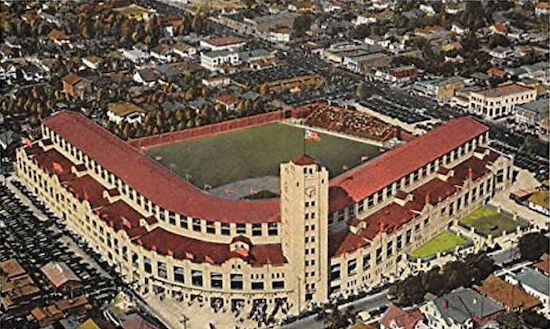


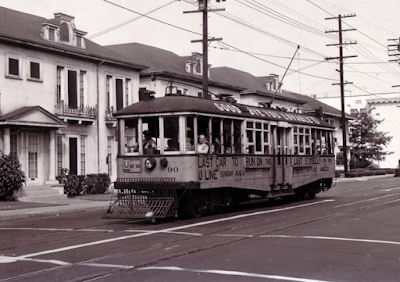


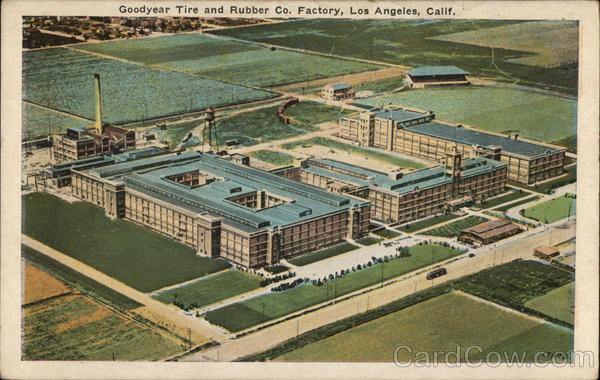
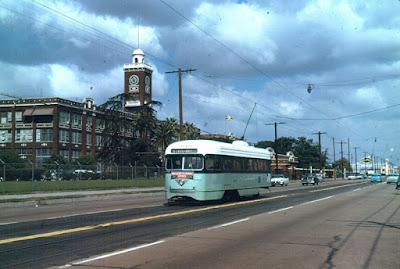











.jpg/1200px-Southern_Pacific_Arcade_Station_on_Alameda_Street_between_Fourth_Street_%26_Sixth_Street%2C_ca.1895-1900_(CHS-4258).jpg)




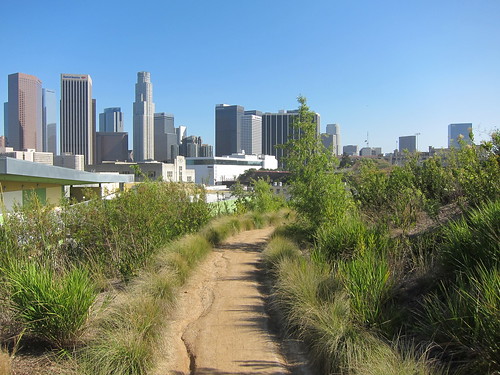






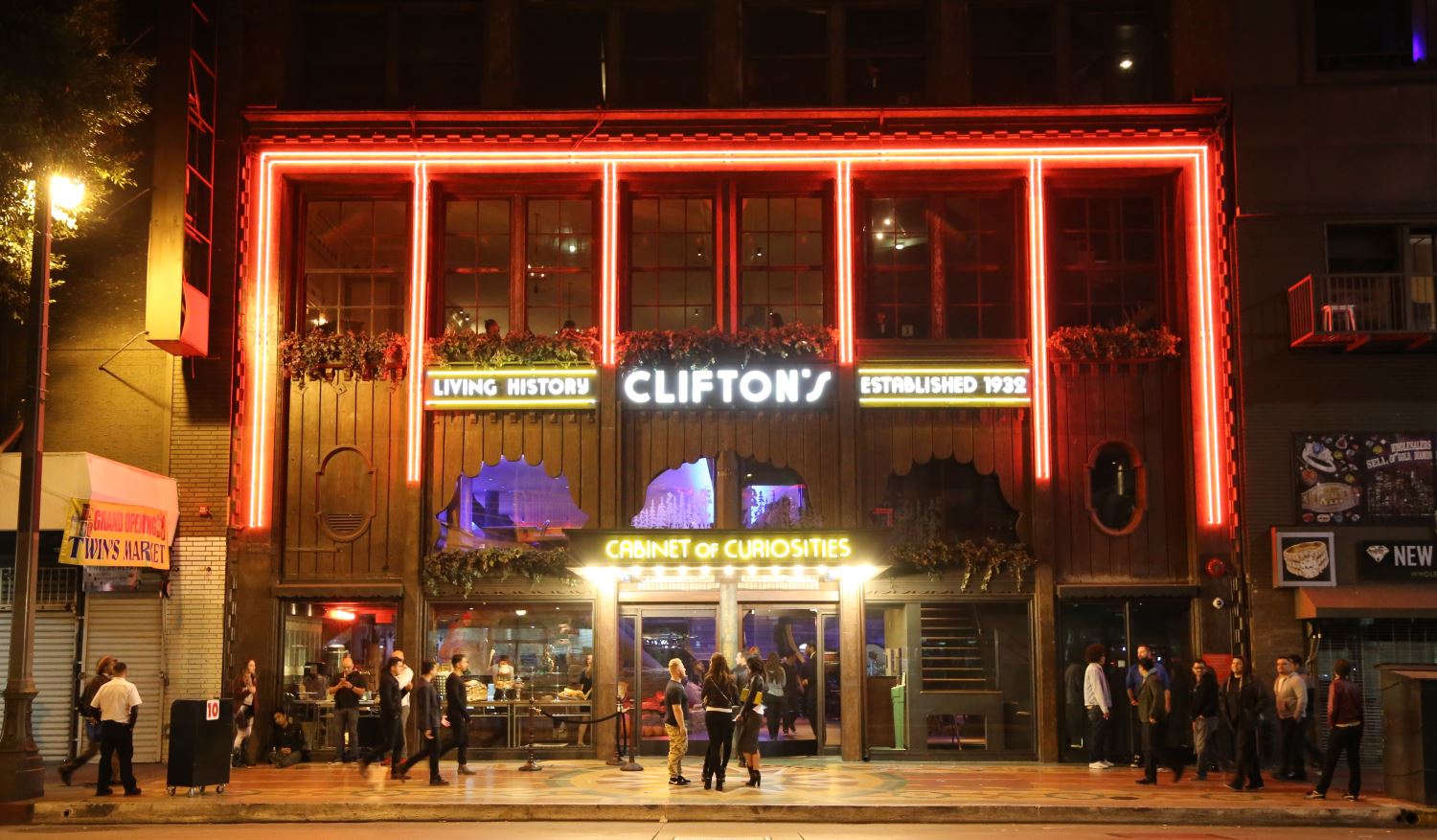

.jpg/1024px-Los_Angeles_Times_building%2C_after_the_bombing_disaster_on_October_1%2C_1910_(CHS-5728).jpg)












